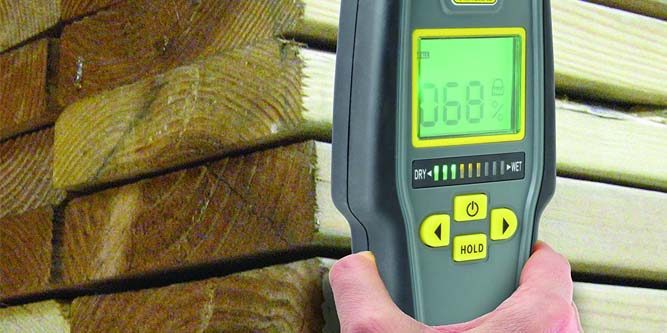
How to select the correct moisture meter
It is worth understanding that in order to measure the humidity of the materials you need, it is necessary to choose a certain type of device. If your choice turns out to be a mistake, then the results of the measurement, received by the wrong device, will have a large error. The easiest way to choose a device is to consult a professional. Specialists will help you to choose a device that will meet your requirements with the best price/performance ratio. Or you can use our best moisture meter for home inspectors overview. But if you have set a goal to choose the wood moisture meter yourself, try to use the algorithm developed by us.

- Determine the range of tasks for which you will use the moisture meter. Do not try to cover all areas of production with a single device. Based on this range of tasks, choose the type of moisture meter that is more suitable for their solution.
- Analyze the change in wood moisture in your chosen range of tasks and determine the measurement range that your instrument should have.
- Analyze the requirements of the process and regulatory documents in terms of the accuracy of the determination of humidity and its tolerances from the regulated values. Based on this information, determine the error, which should not exceed the selected device.
- Carefully study the place, process and conditions of use of the device. Based on this information, form requirements for ergonomics and operating conditions of the device.
- Review the suggestions and select the devices that meet your requirements. Be sure to pay attention to the warranty and serviceability of the appliance.
- Analyze the prices of your favorite devices and choose the price category that suits you. Keep in mind that accurate and reliable devices from renowned manufacturers have a high price.
- Please note that some of the parameters stated by the manufacturer may differ from the actual ones. Talk to people who already have experience with the selected device.
- Keep in mind that there is a much wider range of devices on the market than can be found in the available sources of information. Do not try to get ahead of the teamwork experience and your own experience, but listen to the advice of specialists.
- If possible, get acquainted with the selected device before buying it and evaluate its usability.

There are two different types of devices for determining moisture content and relative humidity – conductive (with spiked electrodes) and high-frequency (electrodeless, based on the use of high-frequency electromagnetic fields).
Conductive moisture meter determines the electrical resistance between the electrodes, which are located in the wood at the desired depth, and lists it in the value of humidity or moisture content. And the use of a device or probe with insulated electrodes allows you to determine the moisture content of the wood at a certain depth. As a rule, these types of devices have a lower threshold of the measuring range of at least 4%.
A high-frequency moisture meter determines the dielectric permeability of wood located in the high-frequency electromagnetic field generated by the device and lists it in the value of humidity or moisture content. The measurement result of such a device is more influenced by the humidity of the layers of wood (or other material) located closer to the source of electromagnetic radiation (i.e. closer to the surface). These types of instruments are more sensitive than conductive ones, but it must be borne in mind that the measurement error may cause surface humidity, foreign matter or coating of the sample being measured.